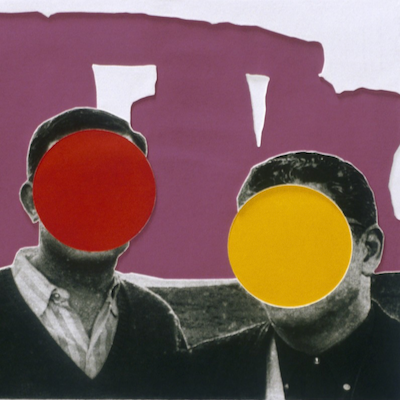Lee Ufan
Lee Ufan (South Korea, 1936) is a pivotal figure in the Mono-ha movement. His minimalist works explore the relationship between materials and space, often juxtaposing natural and industrial elements. Known for meditative sculptures and restrained paintings, Lee’s art invites contemplation and emphasizes harmony between human presence and the natural world.

Artwork by John Baldessari
What is conceptual art?
Sometimes referred to as Conceptualism, this is an art form where the idea(s) or concept(s) behind the work take precedence over material concerns and traditional aesthetics. Many conceptual artworks can be created by anyone simply by following written instructions. The concept or idea is the most essential aspect of the artwork.









